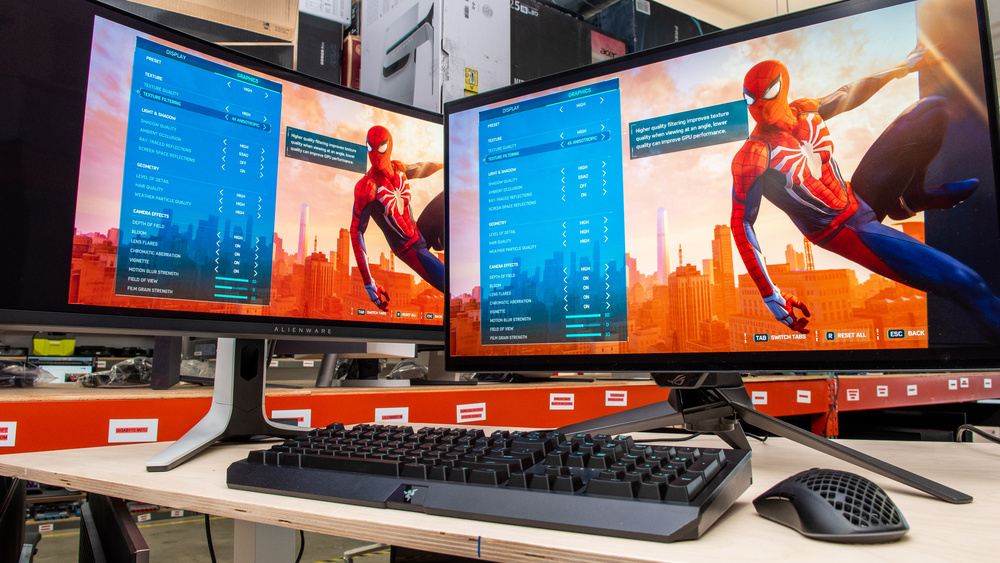On monitors, it is best to see the candidates in person.
Failing that, go to a trusted review site like rtings.
The best gaming monitor we've tested is the ASUS ROG Swift OLED PG27UCDM. It's a premium 4k, 240Hz monitor with a QD-OLED panel.

www.rtings.com
My thought is that larger is more immersive if you have the space.
Higher resolution looks better and can be reduce for performance needs.
Larger cases can hold more parts.
Full size ATX motherboards will have 7 expansion slots.
That was useful way back when one needed ass in cards like sound cards, ethernet/wifi cards and such.
Today, motherboards include those functions.
Past one for the graphics card, just how many more will you be using.
MATX will have 4 expansion slots. It will fit in a more compact and less intrusive case.
Actually, a small case with the same fan arrangement(like2 front 140mm intakes and one 120mm rear exhaust) can cool more effectively. All of the airstream is concentrated where it is needed.
On DDR4 vs. DDR5 I am saying that there is no performance difference.
AM5 motherboards require DDR5.
Pick the one that fits your budget and motherboard.
DDR4 based motherboards, being older tech are usually cheaper.
Any ram speed over the base tech speed is overclocked ram.
Settings are needed to increase the voltage above stock to get the advertised speeds printed on the product.
Intel motherboards can read the required specs of speed,timings and voltage from code embedded in the ram chis themselves.
This is called XMP. Ryzen uses AMD EXPO to read the same specs.
Mostly, the same ram will work on intel or AMD. But not always.
With ryzen ram and it's speed is very closely tied to the processor.
That is one area where things can get complicated.
It is best with ryzen to use ram part numbers that are explicitly supported on the motherboard ram vendor's QVL list.
The list enumerates ram parts that were tested.
Other parts may well work if the ram vendor supports the ram for your motherboard and cpu combination.
Ram issues are definitely one area where AMD can be more difficult.
Some time back, a good rule of thumb was to budget 2x the cost of the cpu for the graphics card.
The mining craze really messed that up.
The rule was a bit simplistic anyway.
What kinds of games will be played.
If the games are fast action at high resolutions, then a strong graphics card is in order.
OTOH, some games are more cpu centric.
They would include sims, mmo and strategy games.
It would be unusual for such games to be able to make effective use of more than 8 processing threads.
Online multiplayer games would be an exception if there are many players.
Look to the specs of those offering advice.
Most, including me will have a bias for amd or intel.
I spend more time than I should on these forums.
I sense more issues with amd than intel.


